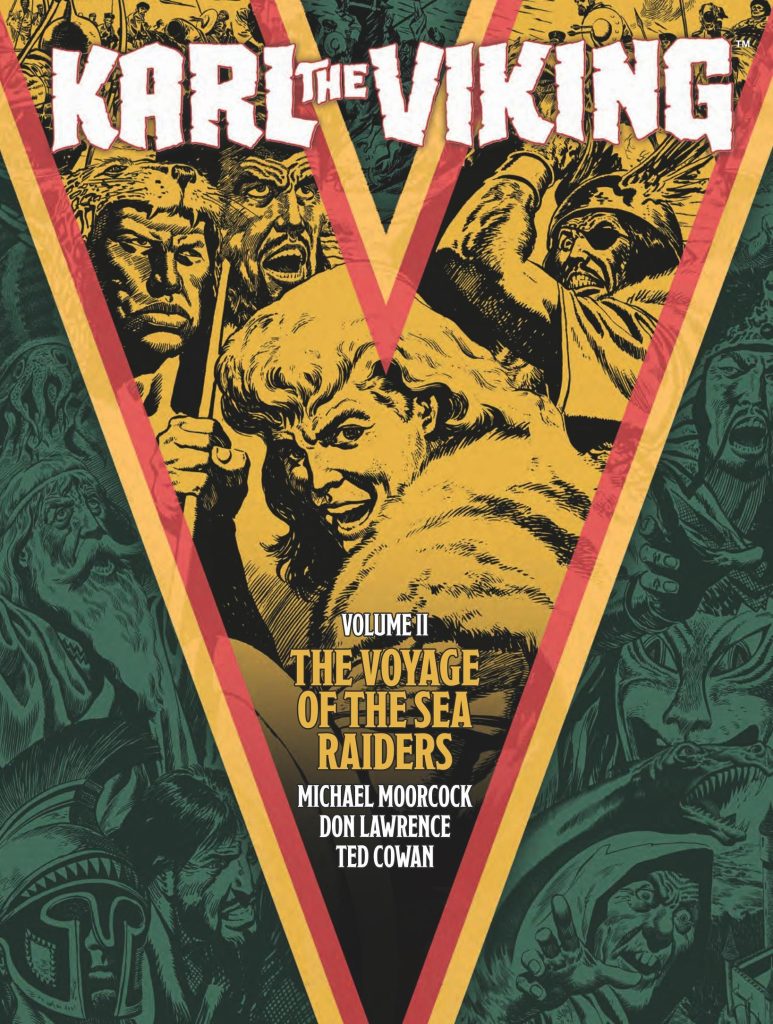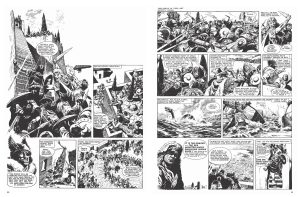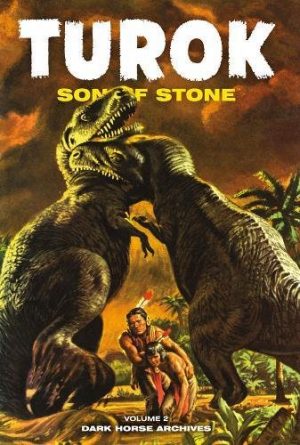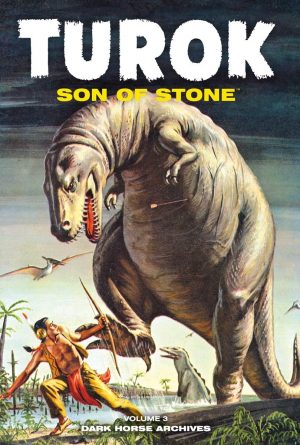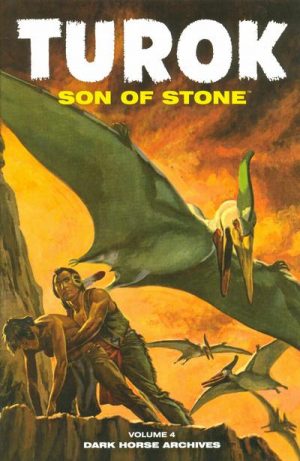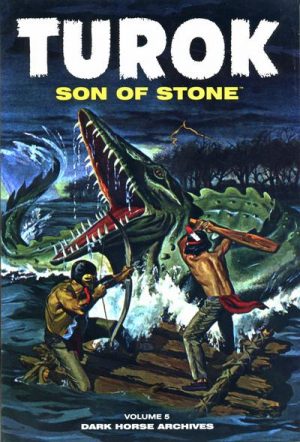Review by Karl Verhoven
It’s not uncommon to come across mention that renowned science fiction and fantasy author Michael Moorcock briefly wrote comics in the early 1960s, but there’s been little evidence of it in reprinted material. That changes with Voyage of the Sea Raiders. Moorcock is just responsible for two of the dozen strips about the Viking warrior, yet given his subsequent reputation it makes sense to highlight his name on the cover.
Truth be told, there’s little to distinguish ‘The Quest of the Long Ships’ from the stories written by Ted Cowan. It’s stirring adventure involving longships, battles and treachery as the dying King Olaf tasks Karl with locating his nephew Sigurd and bringing him back to rule. Sigurd’s not been seen since departing on a voyage three years previously, and Olaf entrusting Karl with the mission instead of his brother Haakon gives an early clue as to who might not want this. A killer whale, a waterspout, rocks toppled over a cliff edge and giant floating icebergs are among the threats Moorcock has Karl face even before making land, and Haakon, largely referred to by his nickname Flamebeard, proves a persistent and elusive foe.
As with The Sword of Eingar, the title headers are removed from each two page strip to show Don Lawrence’s art at its best. For the most part he made allowances for the logo, but there are occasions where he’ll extend the art fully aware that some will be covered when printed. Allowing for a splash panel occupying half a page, Lawrence packs an incredible amount into fifteen to seventeen panels to move the story forward. How many other artists would put the same effort into the battle seen on the sample art? The amazing detail isn’t restricted to the larger panels, as Lawrence crams smaller ones also. A hint of the wonder that’s to come from Lawrence on The Trigan Empire, is provided by the painted art on Moorcock’s second story.
Be warned, though, that while most pages are by Lawrence not everything is. Ted Drury and Robert Forrest are competent replacements, but the pages of Ruggero Giovannini are crude in comparison, not helped by primitive colouring. Two strips are uncredited, which is probably for the best.
Lawrence especially seems to enjoy drawing Gefion One-Eye, seen on the cover and sample art, who’s a rare enemy surviving beyond a single story. He features in Cowan’s most stirring outing, involving Romans and giant frogs. As before, Cowan’s dialogue may have been fit for 1963 and 1964, but it’s now expository and ordinary with plenty of “We serve Karl whom the Gods have chosen” and “Thor, God of wind and storm, give me speed!” Cowan’s strips are formulaic when read one after the other, but one at a time there is creativity, and as Karl forever battles the sea, monsters, and greedy thugs the thrills roll out.
